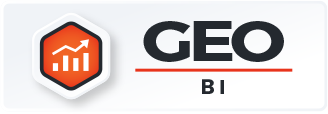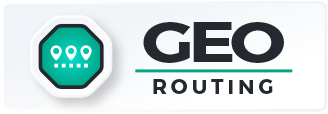- Blog
- Geo Mapping
- Why Target Audience Segmentation is Essential for Data-Driven Teams
Data-driven teams thrive when they know exactly who their audiences are, where they’re located, and how to reach them. But without clear segmentation, it’s easy to waste time and resources on campaigns that don’t connect. Target audience segmentation is the process of dividing your customer base into smaller, more specific groups—making it easier to design tailored strategies that drive results. Instead of guessing at who to reach, segmentation gives teams a precise roadmap of their customers and prospects. In today’s competitive landscape, mastering audience segmentation isn’t optional—it’s essential for growth, alignment, and smarter decision-making.
DEFINING TARGET AUDIENCE SEGMENTATION
At its core, target audience segmentation is about dividing a broad customer base into groups with shared characteristics. These characteristics might include demographics, location, behavior, or buying patterns. For marketing teams, segmentation ensures campaigns resonate with the right people. For sales teams, it helps identify high-value leads and allocate resources effectively. In practice, segmentation transforms raw data into meaningful categories that bring clarity and focus. By defining audience segmentation properly, teams lay the foundation for smarter strategies across the entire business.


Pro Tip: Start by defining just a few clear audience segments, then map them with Geo Mapping to see where they’re located. As you get more comfortable, layer in additional attributes like behavior or psychographics. Building segmentation step by step ensures clarity and prevents overwhelm while still unlocking powerful insights.
What is Target Market Segmentation?
Target market segmentation focuses on dividing a larger market into smaller segments that can be served more effectively. It’s the step before drilling down into specific audiences. For example, a fitness brand might segment the market into gym-goers, outdoor enthusiasts, and wellness seekers. Each of these groups has unique needs and preferences, which shape how the brand markets to them. Understanding target markets in marketing provides a high-level framework for building targeted campaigns that actually resonate.
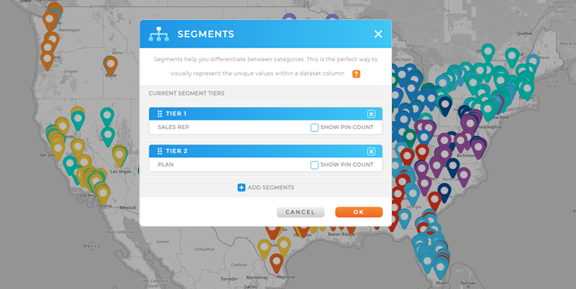
Audience Segmentation Examples
There are countless ways to segment an audience, depending on your industry and goals. Some common audience segmentation examples include age groups, income levels, purchase frequency, or product preferences. A retailer, for instance, may create segments like “first-time buyers,” “loyal customers,” and “seasonal shoppers.” Each of these segments requires a different communication style and promotional strategy. By breaking customers into clear groups, businesses can stop treating everyone the same and start meeting people where they are.
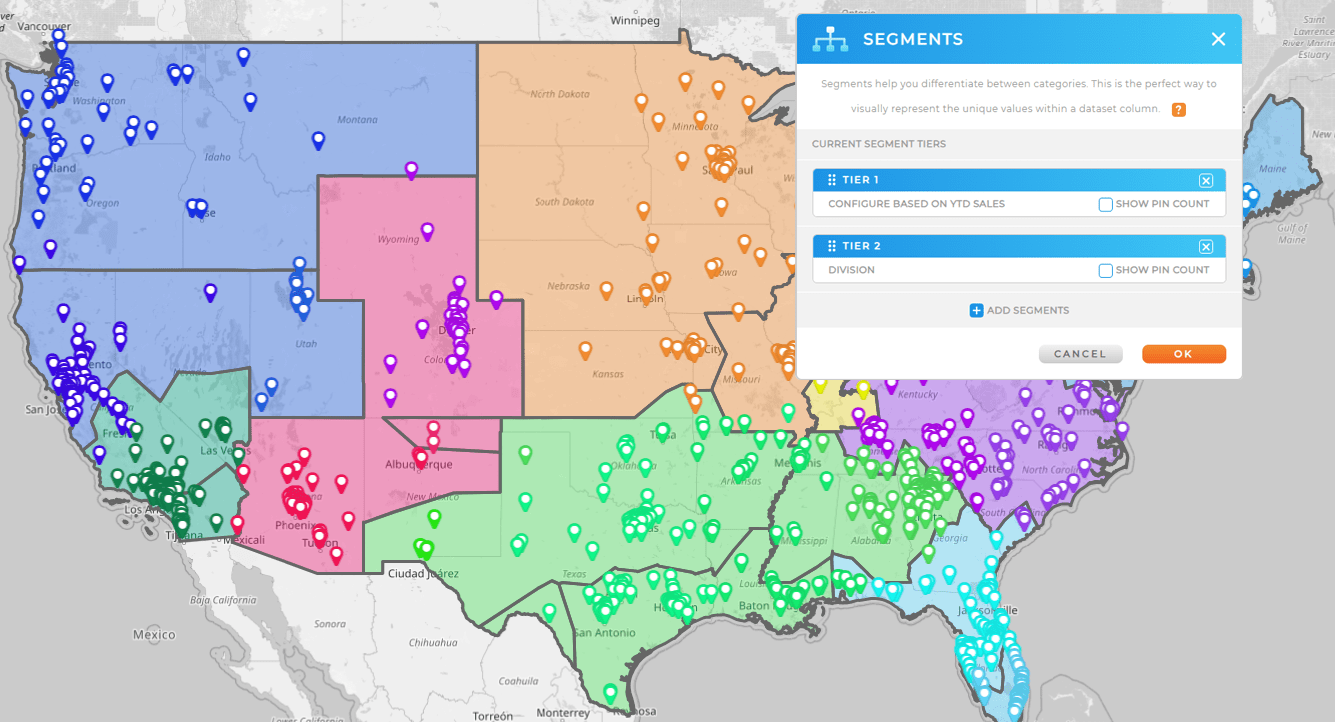
Segmenting by Age Groups
One of the most straightforward ways to define audience segmentation is by age. Younger customers may respond to social-first marketing campaigns, while older audiences may prefer traditional channels like email or direct mail. Age-based segments help businesses fine-tune their messaging, product recommendations, and advertising platforms. For example, a clothing brand might target Gen Z with TikTok ads while using Facebook or email for Baby Boomers. Tailoring strategies to age groups ensures relevance and maximizes engagement.
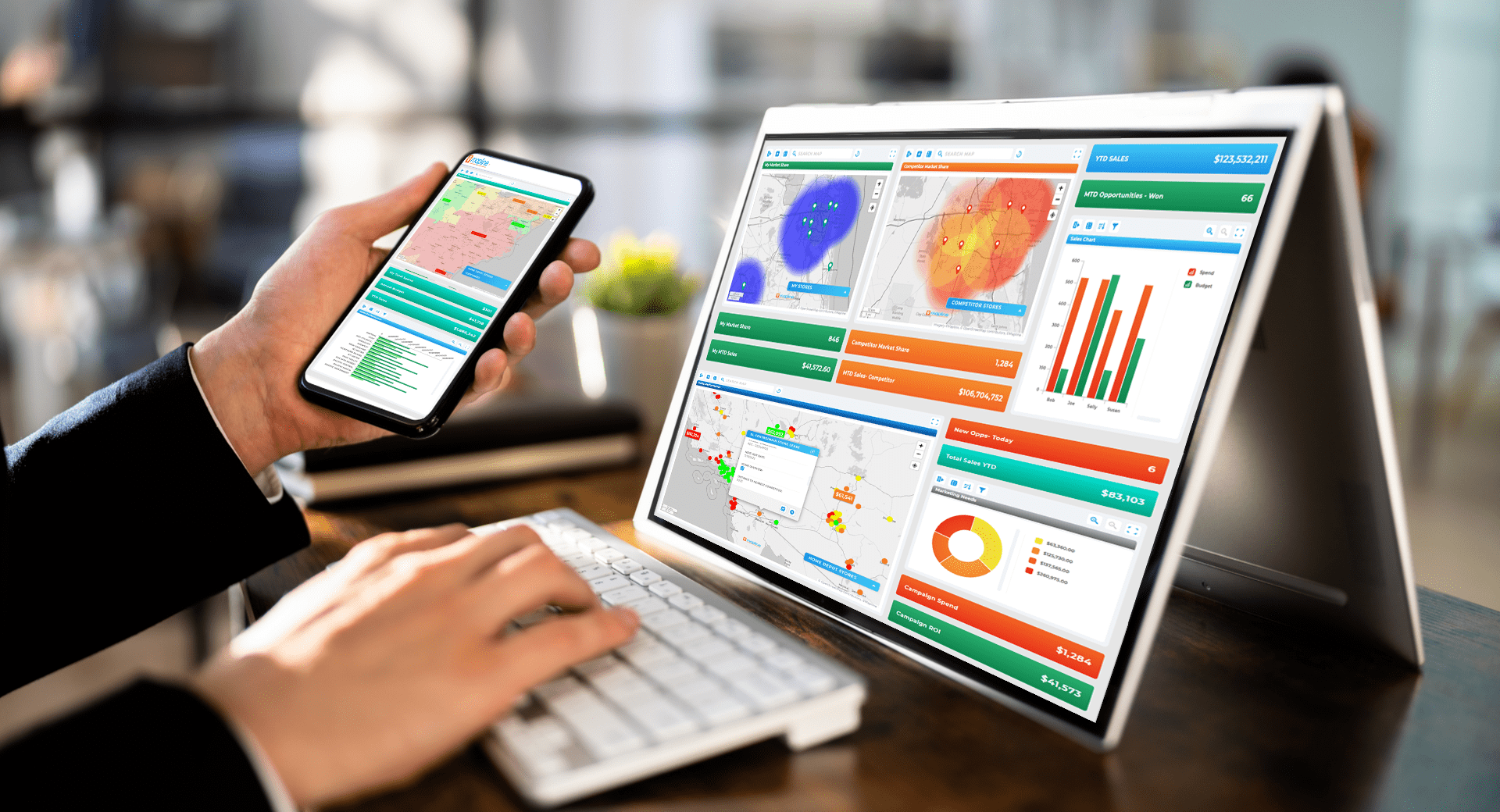
Segmenting by Income Levels
Income segmentation helps businesses align their offerings with a customer’s purchasing power. Luxury brands may target high-income audiences with premium messaging, while budget-friendly products appeal to lower-income groups. Visualizing these segments on a map can also reveal where to advertise your business most effectively. For instance, a real estate company might promote high-end properties in wealthier ZIP codes and starter homes in middle-income neighborhoods. Income segmentation allows for pricing, messaging, and promotions that match the customer’s ability to buy.
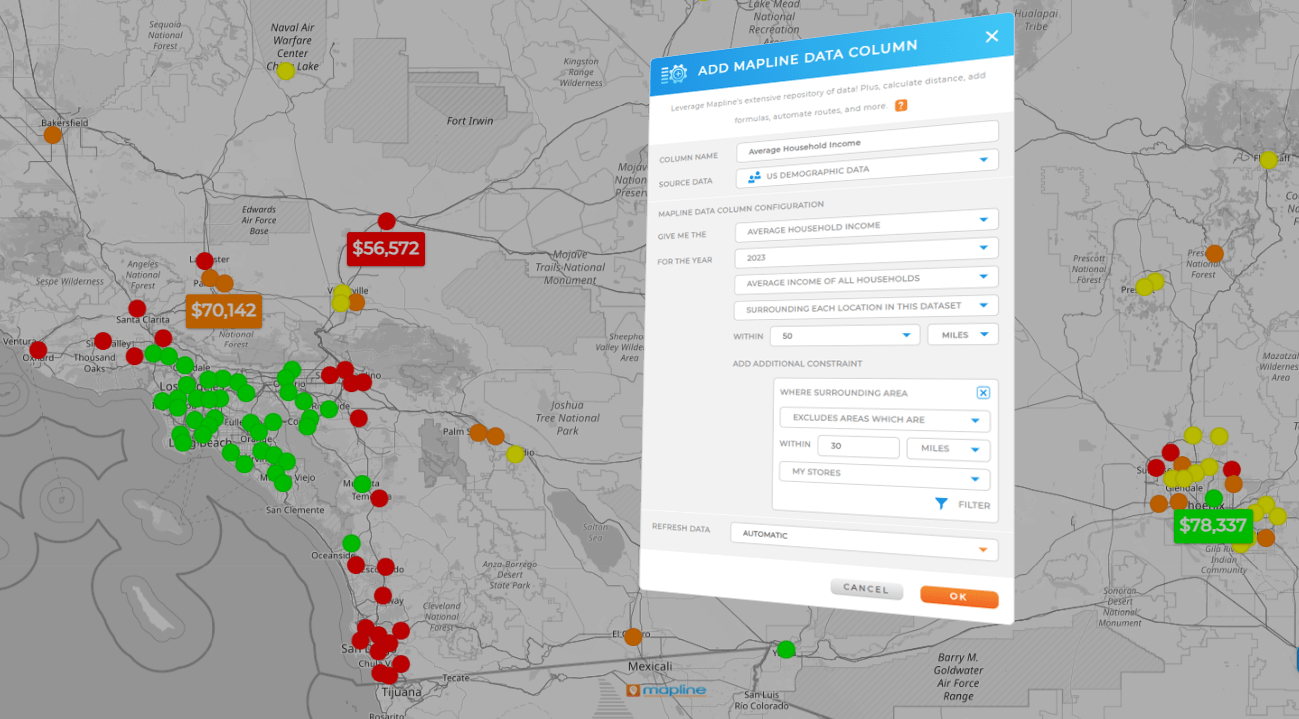

Pro Tip: Take your audience segmentation to the next level! The world’s best mapping software includes built-in demographic data—like population counts, age brackets, income ranges, and even racial demographics. Instead of relying solely on your internal datasets, you can enrich your maps with real-world statistics.
That means you can instantly calculate the population inside a territory, compare average household incomes across regions, or spot age-based audience clusters—all without leaving Mapline. With demographic layers, your segmentation becomes sharper, smarter, and infinitely more actionable.
Segmenting by Purchase Frequency
Customers who buy regularly are very different from those who purchase occasionally. Segmenting audiences by purchase frequency helps businesses design loyalty programs, special offers, or re-engagement campaigns. For example, a coffee shop might reward daily customers with a subscription plan while offering discounts to occasional visitors to encourage more frequent visits. Tracking purchase frequency visually on a map can also highlight regions with loyal customer bases versus areas that need growth. This segmentation empowers businesses to nurture relationships and boost retention.
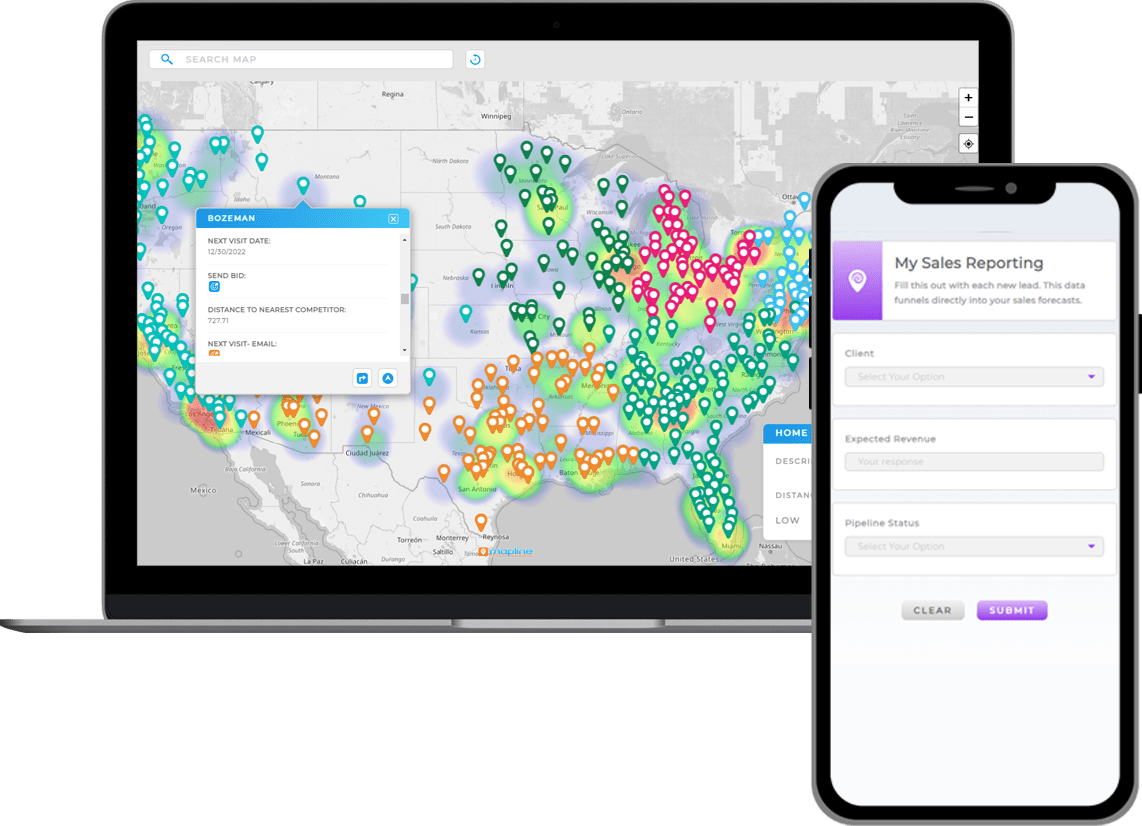
Segmenting by Product Preferences
Product-based segmentation focuses on what customers buy rather than who they are. A tech retailer, for example, might identify segments of customers who prefer laptops, tablets, or smart home devices. Each group requires unique marketing approaches and cross-sell strategies. When product preferences are mapped visually, businesses can see geographic clusters of demand for certain products. This helps them decide where to promote their business and which inventory to prioritize in specific regions. Product-based segmentation ensures offerings align with actual customer interests.
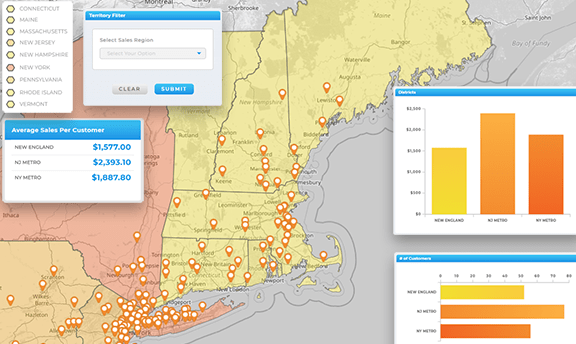
WHY SEGMENTATION MATTERS FOR DATA-DRIVEN TEAMS
Segmentation isn’t just a marketing buzzword—it’s a necessity for teams that want to act on data instead of intuition. By breaking customers into smaller groups, data-driven teams can uncover insights that would otherwise stay hidden in spreadsheets. This leads to smarter targeting, improved efficiency, and higher returns on investment. Here are a few reasons why segmentation is essential for today’s data-driven organizations.
Increase Campaign Effectiveness
When you know your audience segments, every campaign can be tailored to fit their preferences. Instead of running one-size-fits-all ads, you can design messaging that speaks directly to each group. For example, younger audiences may respond to social-first campaigns, while professionals might prefer LinkedIn outreach. This targeted approach increases engagement and improves conversion rates. The more specific your segmentation, the more effective your campaigns will be.
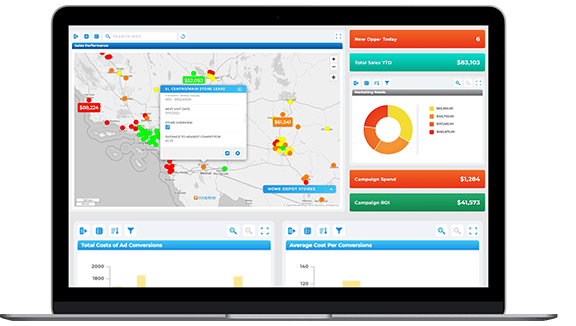
Maximize Resource Allocation
Sales and marketing budgets are rarely unlimited. Audience segmentation helps teams allocate resources where they’ll have the greatest impact. By identifying high-value customer segments, you can invest more heavily in the audiences most likely to deliver ROI. This prevents wasted spend on low-performing markets and ensures every dollar works harder. Segmentation is a strategic filter that directs resources toward growth opportunities instead of scattershot efforts.
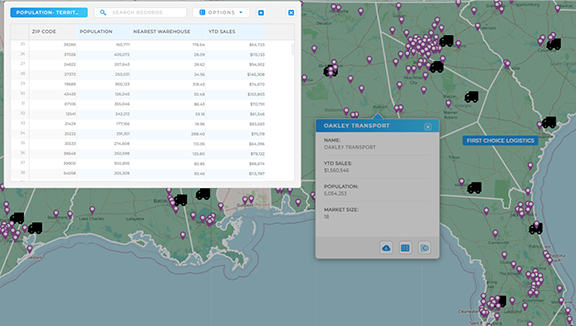
Improve Cross-Team Alignment
Segmentation also ensures that sales, marketing, and operations are aligned on the same priorities. When everyone can see the same audience segments visualized on a map, it eliminates confusion and keeps strategies consistent. Marketing knows who to target, sales knows where to focus, and operations knows where demand is rising. This alignment makes data-driven teams more agile and more effective at executing strategy.

THE FOUR MAIN TYPES OF TARGET AUDIENCE SEGMENTATION
Audience segmentation can take many forms, but most approaches fall into four primary categories: demographic, geographic, psychographic, and behavioral. Each type offers unique insights into your target customer segments. Data-driven teams often use a combination of these to build a complete picture of their audience. Here’s how each type works and why it matters.
Demographic Segmentation
Demographic segmentation groups people based on attributes like age, gender, income, education, or family status. This is often the starting point because demographic data is easy to collect and analyze. For example, a company targeting parents might segment by household income and number of children. Demographics provide the foundation for understanding who your customers are in broad strokes. They’re a critical first step in defining your target market segmentation.
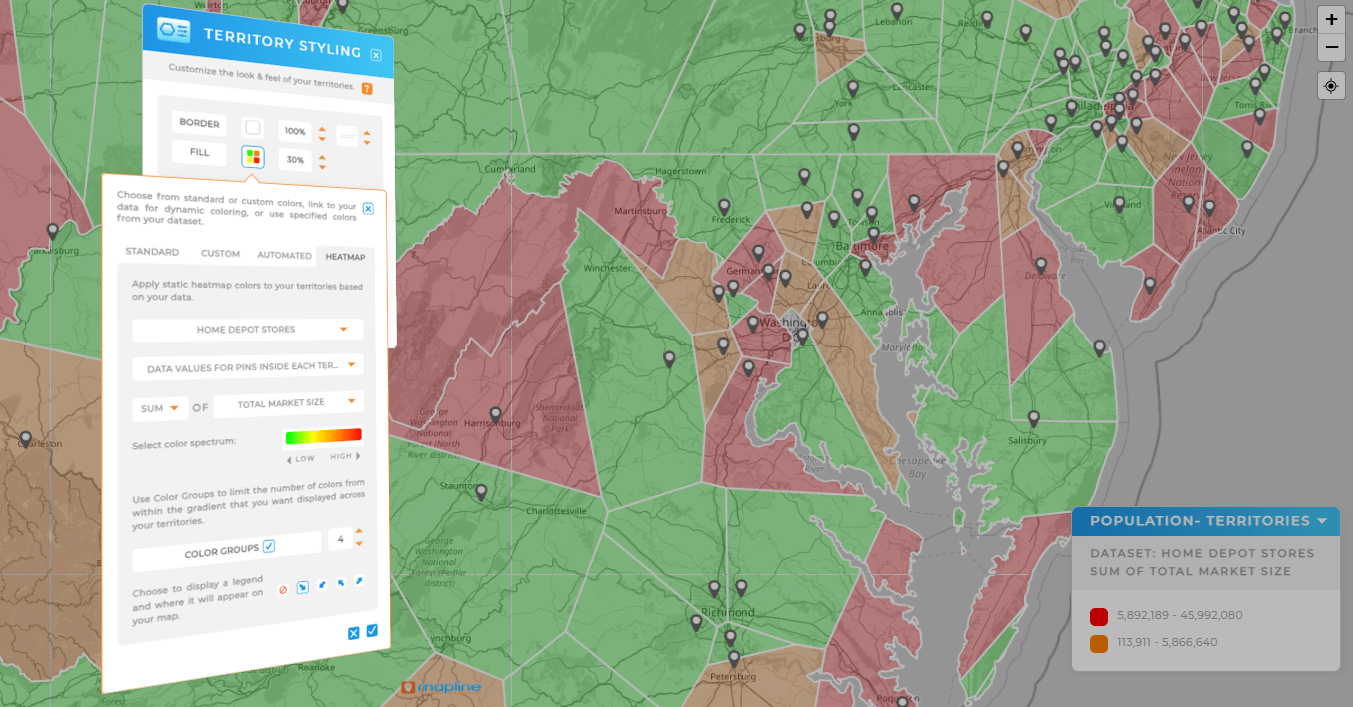
Geographic Segmentation
Geographic segmentation organizes audiences based on location. This might be as broad as countries or as specific as ZIP codes. For businesses that depend on local markets, geographic segmentation is essential. For example, a chain of restaurants may segment by city to track performance in each location. Geographic segmentation makes it clear where demand is strongest and where expansion opportunities exist. By mapping these insights visually, teams can align strategies to regional needs.
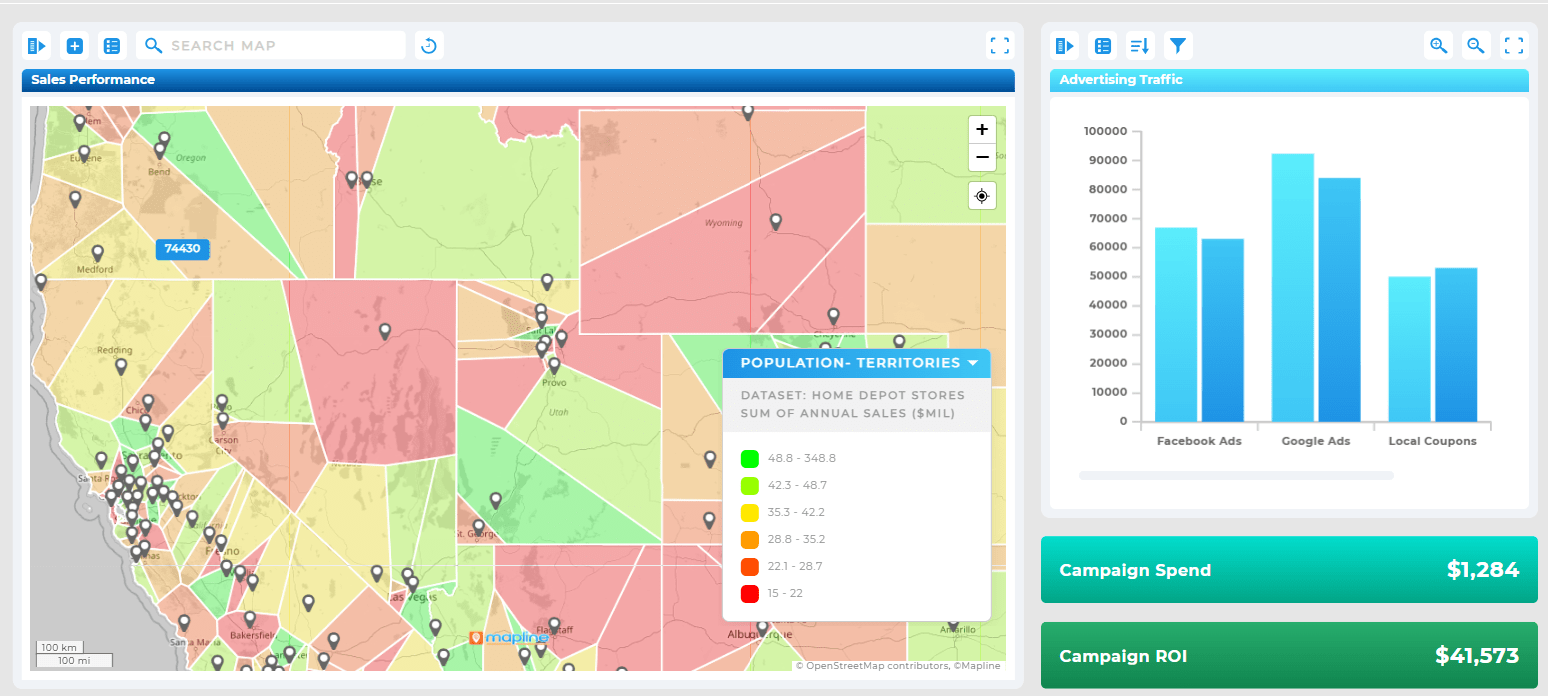
Psychographic Segmentation
Psychographic segmentation digs deeper into audience motivations, values, and lifestyles. It’s less about where people live and more about why they buy. A travel company, for instance, may segment customers into adventure-seekers, luxury travelers, and family vacationers. Each segment requires different messaging to capture interest. Psychographic data often comes from surveys or social listening, but when combined with other types of segmentation, it paints a powerful picture of your audience’s mindset.
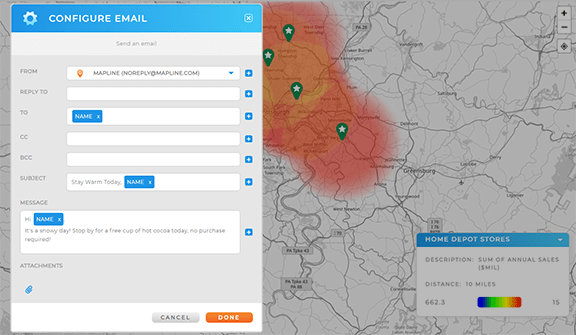
Behavioral Segmentation
Behavioral segmentation focuses on actions customers take, such as purchase history, product usage, or engagement level. This approach is highly effective for sales and marketing because it connects directly to buying behavior. A SaaS company, for example, may segment customers into trial users, paying customers, and churn risks. Behavioral data is often the most actionable because it directly influences decisions about offers, campaigns, and sales strategies. For data-driven teams, it’s the bridge between audience insights and business outcomes.
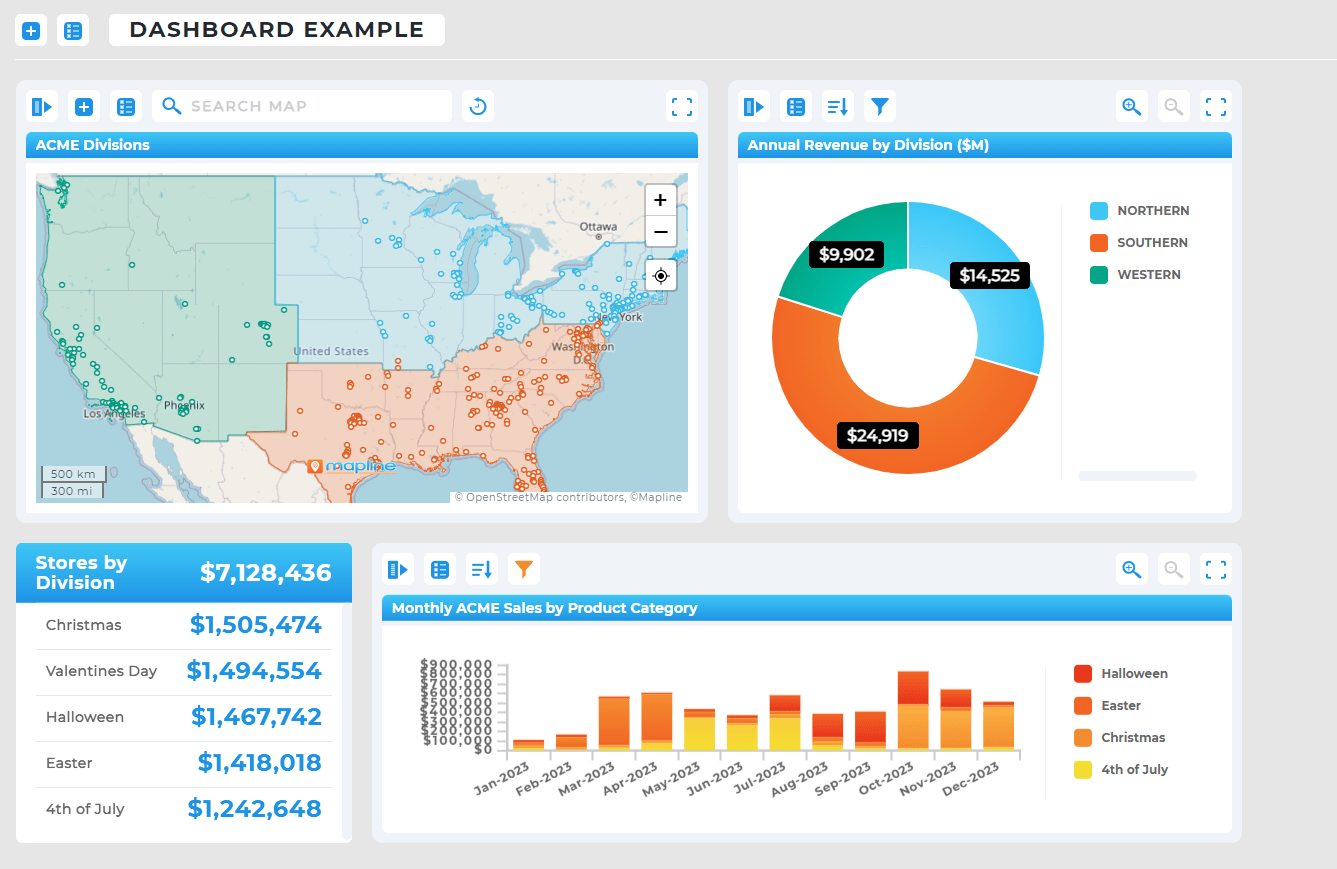
HOW MAPLINE TURNS SEGMENTATION INTO STRATEGY
Segmentation is powerful on its own, but when combined with Mapline’s pin mapping tools, it becomes truly transformative. Instead of analyzing rows of data, you can visualize audience segments on a map. This makes it easy to spot clusters, identify trends, and act on insights faster. Mapline turns segmentation from a static analysis into an interactive tool for growth. Here are some of the ways Mapline empowers data-driven teams to put segmentation into action.
Visualize Segments on a Map
By creating custom maps with pins, you can see where your audience segments are located in real time. This makes patterns obvious, such as geographic clusters of high-value customers or underserved areas with growth potential. The visual format makes insights easier to share across teams and more actionable in daily decision-making. Visualizing segmentation turns abstract categories into a living picture of your audience.
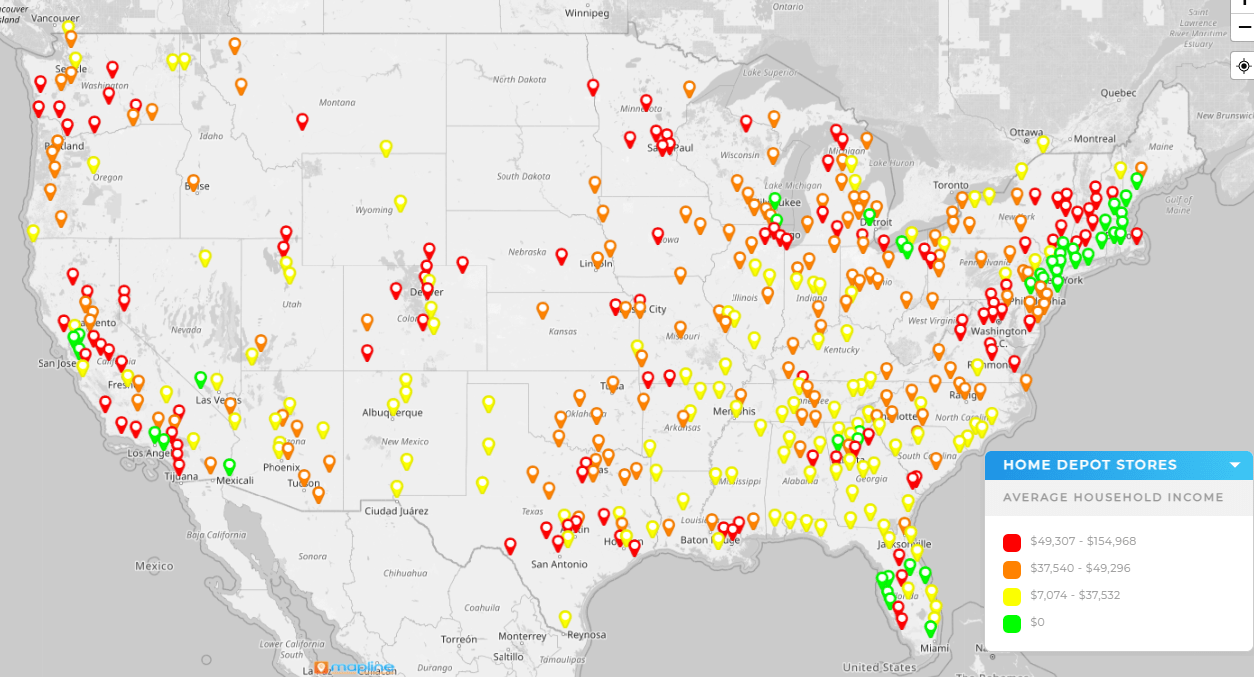
Filter and Compare Segments
Mapline lets you filter by attributes like revenue, customer type, or engagement level to drill into specific segments. You can also compare different audience groups side by side on the same map. For example, you might compare loyal customers with first-time buyers to see where each group is concentrated. This makes it simple to evaluate strategies and spot new opportunities for growth. The ability to filter and compare gives data-driven teams flexibility in how they analyze audiences.
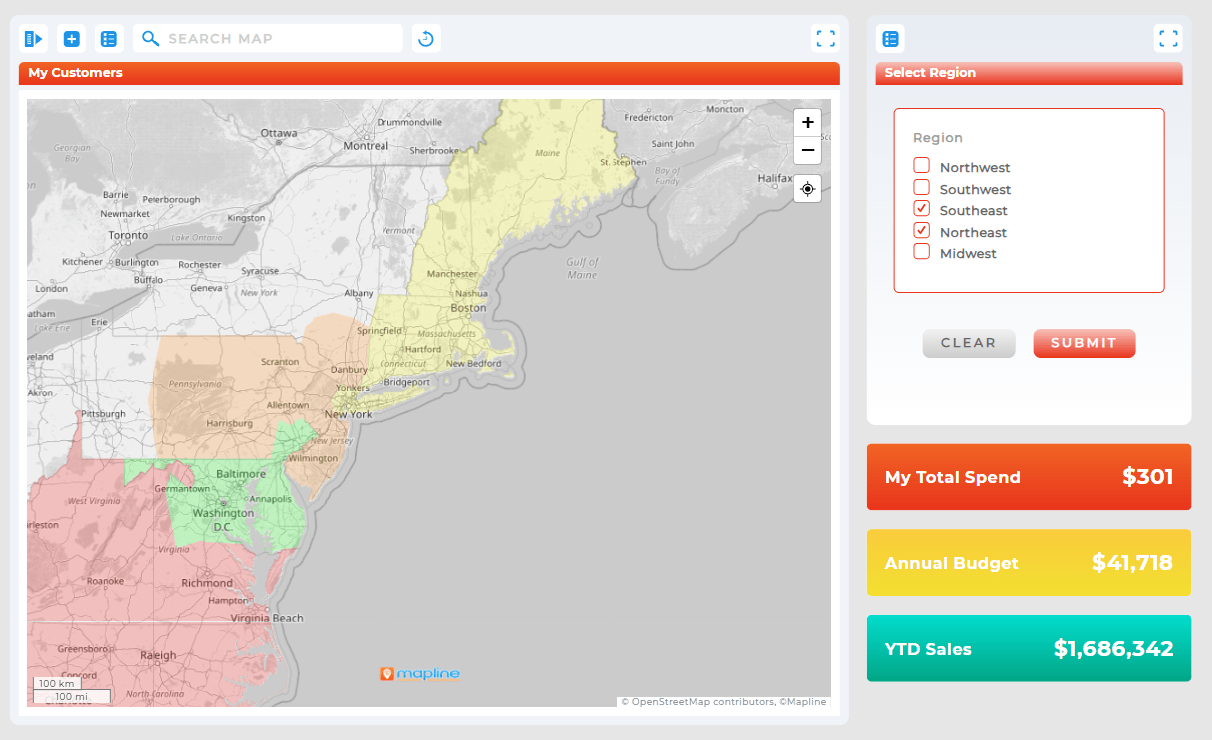
Spot Trends with Heat Maps
Heat maps take audience segmentation a step further by highlighting intensity and density. You can see where demand is strongest, where campaigns are working, and where gaps exist. For marketing, this helps identify where to advertise your business most effectively. For sales, it highlights regions that deserve more resources. Heat maps make audience segmentation visual, actionable, and impossible to ignore.
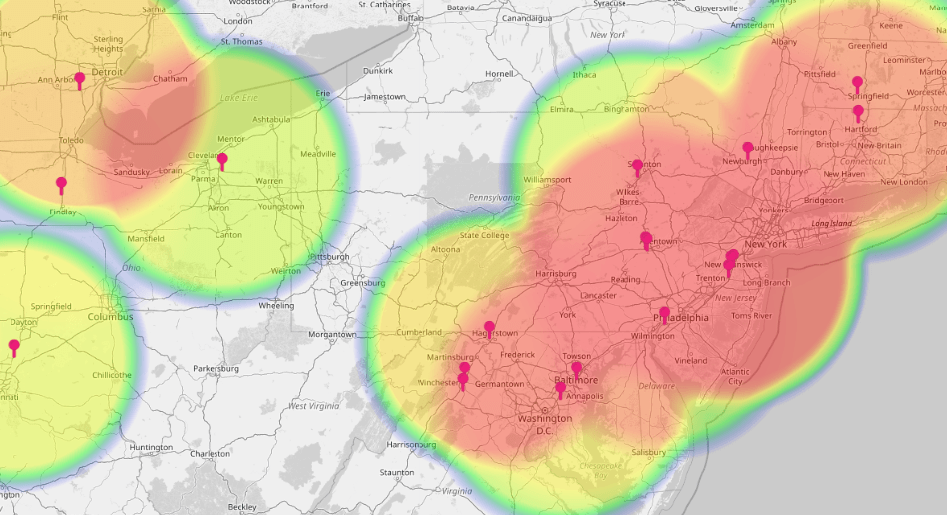
Align Territories to Segments
Sales territories often don’t align perfectly with audience distribution. Mapline allows you to adjust territories based on actual audience data, ensuring reps are focused where they’ll have the biggest impact. This prevents overlaps, balances workloads, and ensures every market gets proper attention. Aligning territories with audience segments turns strategy into execution. It’s a direct way to increase sales efficiency and performance.
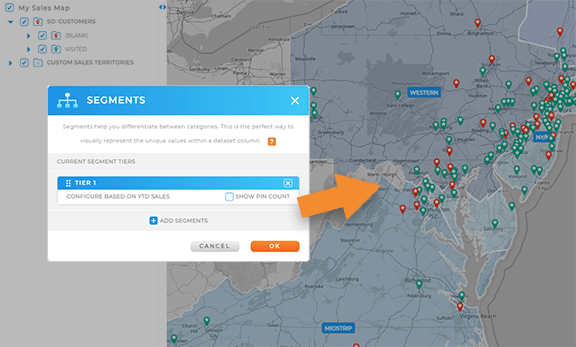
Generate Reports and Dashboards
Segmentation isn’t just about maps—it’s also about analysis. Mapline lets you generate reports and build dashboards that refresh automatically as new data comes in. You can track performance by segment, monitor campaign results, and measure ROI with ease. Reports provide the hard numbers, while maps tell the story visually. Together, they give data-driven teams a complete view of their audience segmentation efforts.
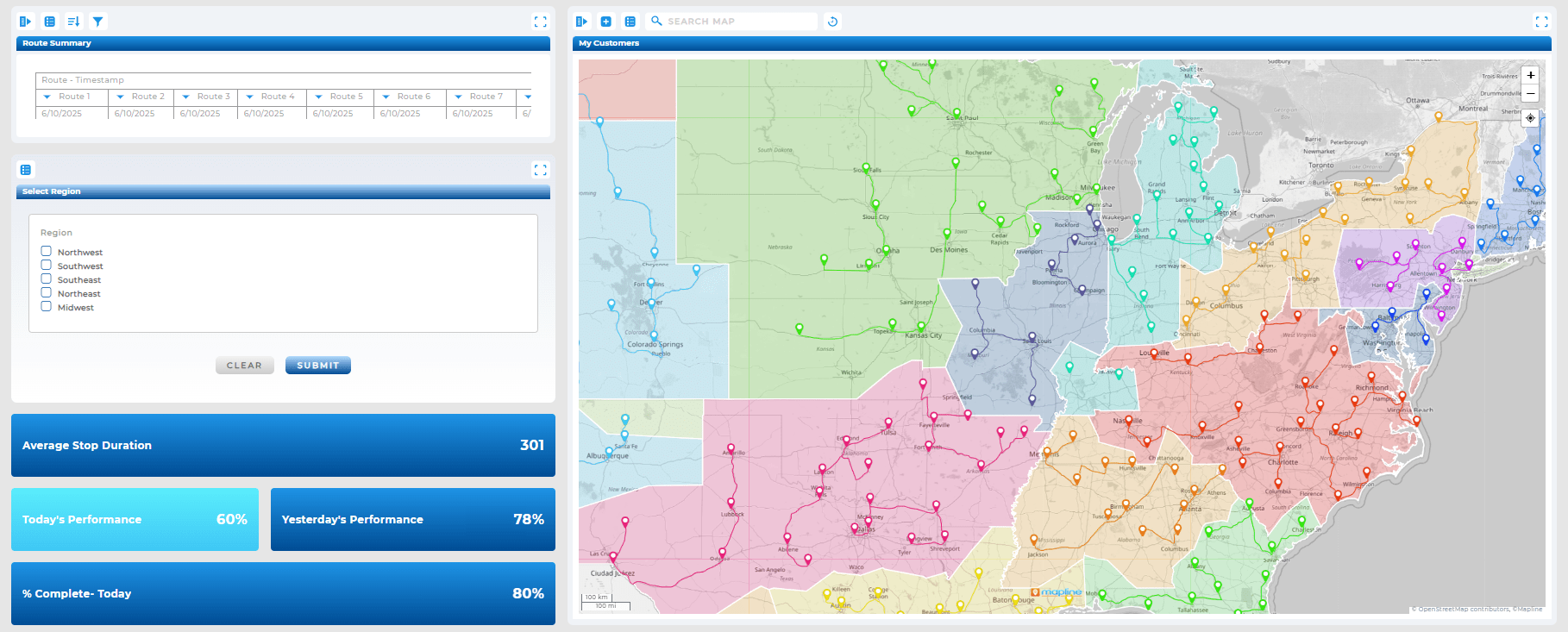
Target audience segmentation is the process of dividing your customer base into smaller groups with shared characteristics so you can target them more effectively.
Target market segmentation focuses on dividing a broad market into categories, while audience segmentation narrows in on the specific groups you plan to engage.
Examples include segmenting customers by demographics (like age or income), geography (like city or ZIP code), psychographics (like lifestyle), or behaviors (like purchase history).
Segmentation helps teams allocate resources efficiently, improve targeting, align departments, and increase ROI by focusing on the most valuable customer groups.
Mapline makes segmentation visual and actionable by plotting audience groups on maps, providing filters and heat maps, and generating reports and dashboards for analysis.






